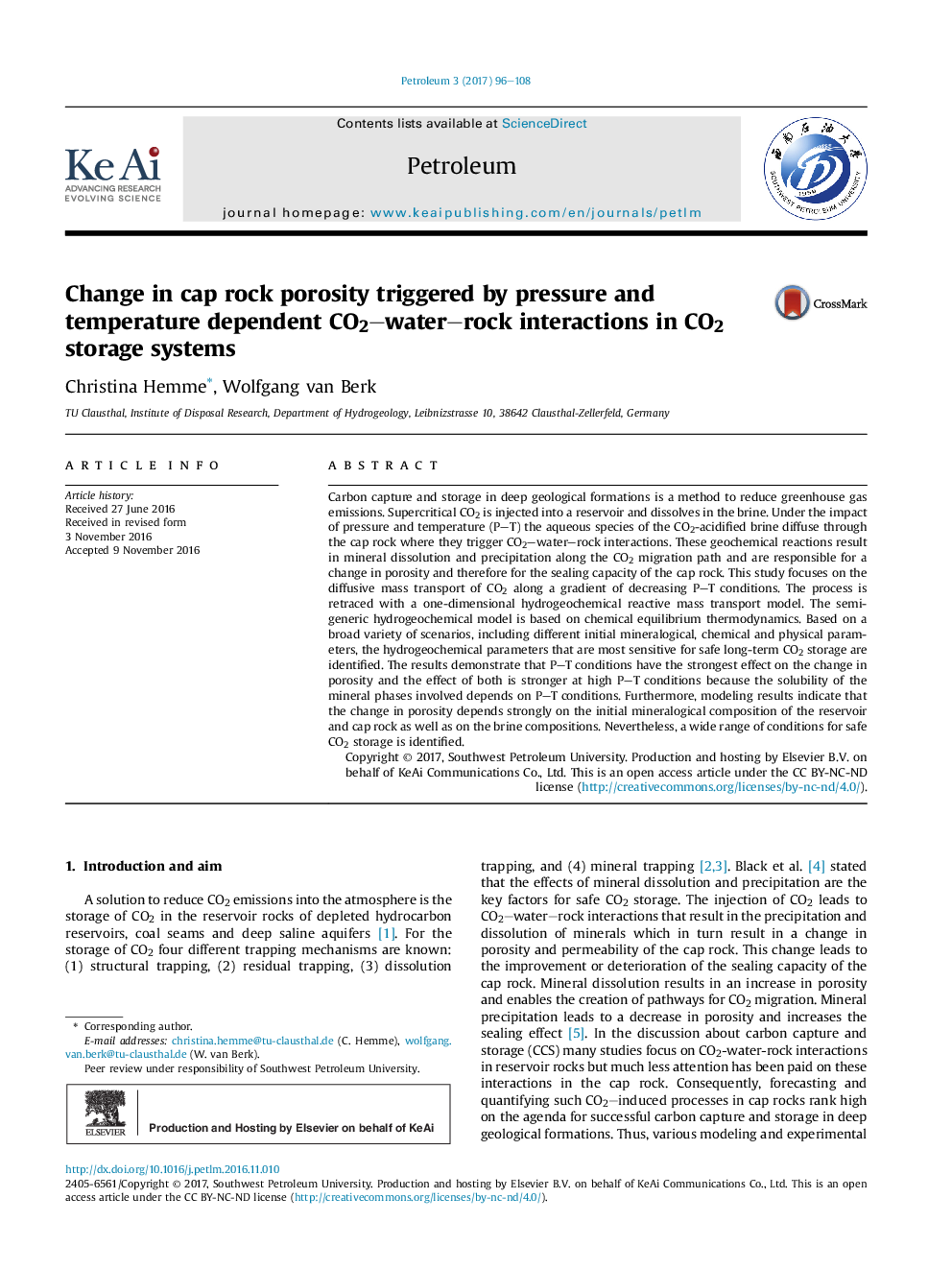| Article ID | Journal | Published Year | Pages | File Type |
|---|---|---|---|---|
| 5026513 | Petroleum | 2017 | 13 Pages |
Carbon capture and storage in deep geological formations is a method to reduce greenhouse gas emissions. Supercritical CO2 is injected into a reservoir and dissolves in the brine. Under the impact of pressure and temperature (P-T) the aqueous species of the CO2-acidified brine diffuse through the cap rock where they trigger CO2-water-rock interactions. These geochemical reactions result in mineral dissolution and precipitation along the CO2 migration path and are responsible for a change in porosity and therefore for the sealing capacity of the cap rock. This study focuses on the diffusive mass transport of CO2 along a gradient of decreasing P-T conditions. The process is retraced with a one-dimensional hydrogeochemical reactive mass transport model. The semi-generic hydrogeochemical model is based on chemical equilibrium thermodynamics. Based on a broad variety of scenarios, including different initial mineralogical, chemical and physical parameters, the hydrogeochemical parameters that are most sensitive for safe long-term CO2 storage are identified. The results demonstrate that P-T conditions have the strongest effect on the change in porosity and the effect of both is stronger at high P-T conditions because the solubility of the mineral phases involved depends on P-T conditions. Furthermore, modeling results indicate that the change in porosity depends strongly on the initial mineralogical composition of the reservoir and cap rock as well as on the brine compositions. Nevertheless, a wide range of conditions for safe CO2 storage is identified.
